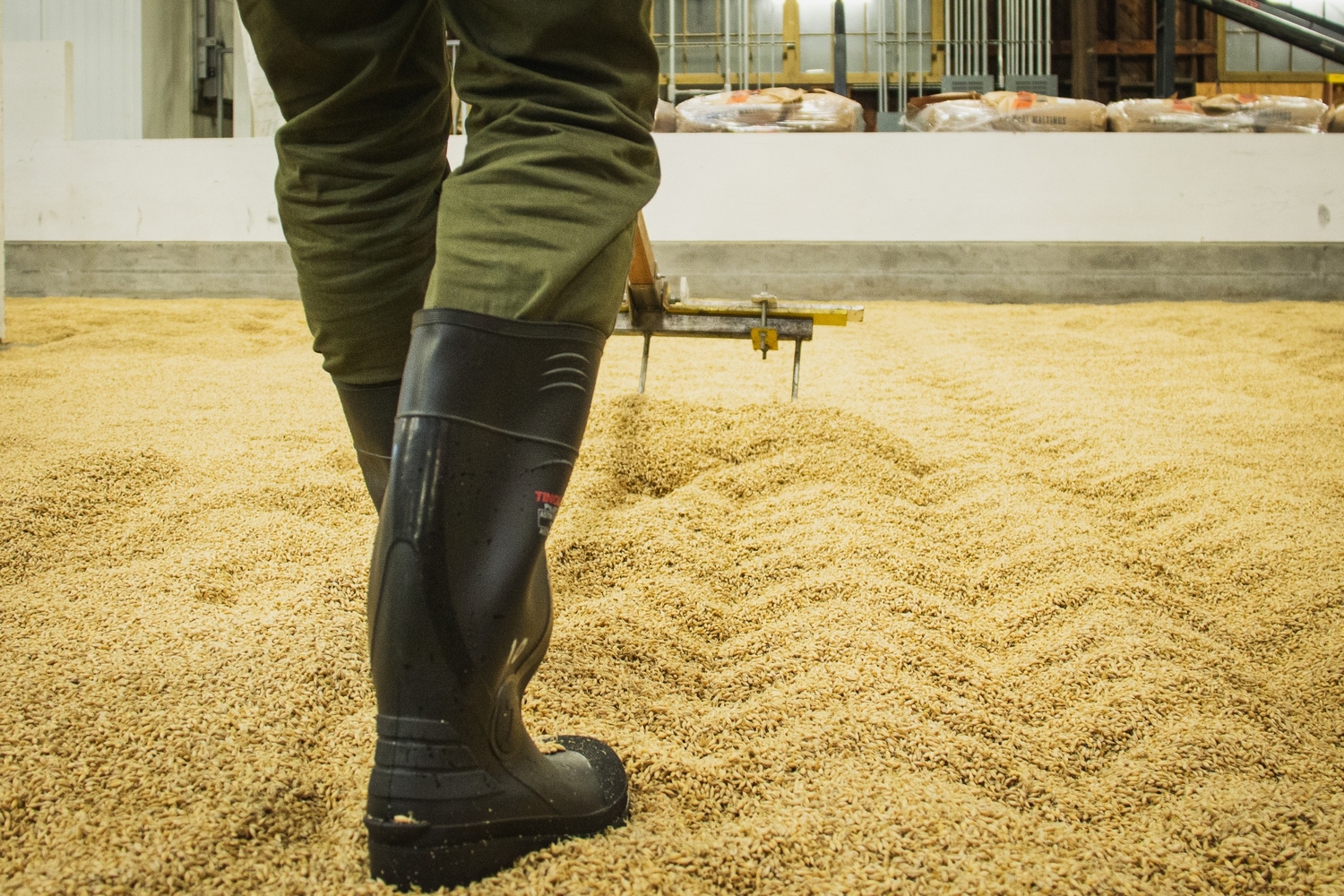Echoing the collaborative spirit that’s become a hallmark of the craft brewing industry, two maltsters separated by an ocean and a continent are embarking on a first-of-its-kind partnership, writes Jesse Bussard.

Crisp Malt, with its renowned floor maltings established in 1870 in Norfolk, and Admiral Maltings, an artisan maltster from California’s Bay Area in the United States, are undertaking the collaboration.
The seeds of this transcontinental alliance were planted a decade ago when Admiral Maltings co-founders Ron Silberstein, Dave McLean, and Curtis Davenport first visited Crisp’s facilities and one of its barley growers at Branthill Farm, in Norfolk.
As a long-time customer who cherished Crisp’s floor-malted offerings during his previous tenure as a brewer, Ron was especially enamored with the traditional techniques still employed at the historic English maltings.
“We spent half the day there being shown around,” he said. “It was fantastic.” For the American craft maltsters, the visit provided an inspiring glimpse into an age-old malting process used for centuries before modern industrial methods largely replaced it.
It wasn’t until the 2022 Craft Brewers Conference in Minneapolis that the idea to collaborate would germinate. Ron, Crisp technical director Dr Dave Griggs, and others started chatting about how breweries frequently team up on collaboration brews. “What’s stopping maltsters from doing collaborations?” someone posed. Just like that, the idea took shape.
“Why don’t we swap barleys and do this joint project where Admiral will malt UK barley, and we’ll malt US barley?” David recalled. “Then we’ll get respected brewers in the respective countries to brew with it.”
After a brief false start in early 2023, a plan to launch the collaboration finally crystallised. In January this year, Crisp sent Admiral a container of heritage Haná barley, a landrace variety with roots dating back to the 1850s Moravian Empire in what is now the Czech Republic.
In return, Admiral will ship Butta 12, a unique variety developed by past plant breeder Dr Lynn Gallagher at the University of California Davis, to be floor malted at Crisp’s historic facility. The second iteration of the collaboration will take place next year.
For the two maltsters, this first-ever international collaboration is about much more than swapping unique grain stocks. It’s a celebration of the ancient art of floor malting itself, a craft that connects modern artisans to the earliest techniques for producing quality malts.
“This is focusing a spotlight on the renewal of a traditional method that people have passed by in favour of cheaper labour and less space,” said Ron. “It’s a celebration of floor malting, a celebration of variety, and their contributions to flavor in what we’re doing.”

Crisp Malt’s Dr David Griggs
By resurrecting heritage barley landraces like Haná and exploring their expression through a traditional floor malting regime, the collaboration taps into the rich history and provenance of the grains themselves. It’s an opportunity to experience these varieties as they were originally manifested centuries ago.
While celebrating tradition lies at the heart of this collaboration, it also presents an opportunity to empirically study the nuances that traditional floor malting can impart.
As David Griggs explained, the gentle, low-airflow environment of a floor malthouse allows subtleties to be preserved that modern pneumatic malting may strip away. “You go into the floor boxes, it’s like a cathedral. You could hear a pin drop in there… there’s no airflow,” he describes. “I think we’re losing things in the big airflow plants which we’re retaining in the floor malting.”
Prior analytical research done by Crisp, comparing its floor malts to pneumatically produced versions, revealed distinct differences in the volatile organic compound profiles. “If you look at the mass spec fingerprint, there were peaks present in the floor malt which weren’t there, or were much reduced, in the pneumatic malt,” said David.
While they didn’t analyse whether those specific compounds imparted flavor differences, David said “it doesn’t take too much of a leap of imagination” to connect those chemical distinctions to the malt flavour dissimilarities that brewers widely report between floor and pneumatic malts.
What’s clear is that Crisp’s research exposed quantifiable variations resulting from each malting regime’s process. “We also showed a difference between varieties,” David added, underscoring how a barley’s specific genetics intersect with the malting house’s methodology to create unique sensory profiles.
By supplying both Admiral-malted and Crisp-malted versions of the same Haná barley variety, this collaboration provides a rare opportunity to explore those interplaying impacts of variety and process in a head-to-head comparison detached from other variables.
While the collaboration will provide an avenue for research, it seems the most compelling analysis may come from the subjective impressions of the brewers and drinkers experiencing these transatlantic malts side-by-side. David concludes that there is a difference. Now it’s a matter of rendering it experientially through this symbolic grain swap.
Brewers get their hands on the first iteration of Admiral-malted Haná over the coming months.
• Jesse Bullard is the founder of Cowpunch Creative.











